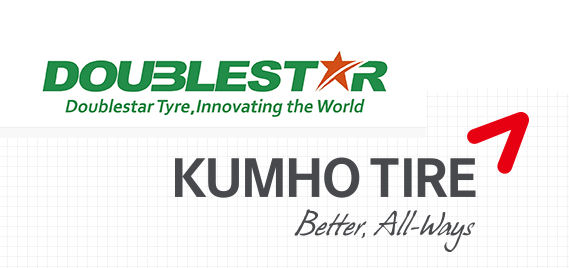Why Doublestar’s Kumho purchase is a good idea

15 months after bidding got underway, Qingdao-based Doublestar and its consortium of Chinese banks and investors bought 45 per cent of the South Korean tyremaker Kumho Tire over the Easter weekend. Whatever other clauses are written into the deal, following the release of shares issued for the purpose of the sale, Kumho Tire’s creditors will own a 23.1 per cent shareholding in the tyre maker, down from 42.01 per cent. This makes the Chinese tyre firm controlling shareholders in South Korea’s Kumho Tire.
The bidding process began in earnest in January 2017, with many surprised that Doublestar was named alongside Linglong (one of China’s biggest and best-known brands, domestically at least) and at least three other Chinese bidders. Nevertheless, it took less than two weeks for the Doublestar to be named as the preferred bidder of Kumho’s creditors. This might make it sound like plain sailing for Doublestar. However, no-one can ignore that the journey to acquisition day has been a bumpy one, with Doublestar facing several purchase roadblocks and ultimately a breakdown in talks over a diverse range of issues.
The biggest pothole came in September 2017 when pressures over usage of the Kumho brand, the sale price, South Korean Airforce concerns and union consideration nearly caused the wheels to come off the whole deal. At this point there were a number of theories about what had happened. Some questioned the financial feasibility of Doublestar and its consortium borrowing the money needed to buy into Kumho. Some even said that Doublestar’s demands for price discounts that ended up being in the region of 13-odd per cent were a way forcing the deal to collapse in order to back away from the purchase without losing facing. However, the fact that Doublestar persevered in the time between September 2017 and March 2018, by which time we were again reporting that Doublestar was back in pole position, puts paid to this theory. Doublestar has now proved itself to be a consistent and persistent suitor. So what does Doublestar hope to gain?

Kumho purchase timeline
- January 2017 – Kumho sale initiated by creditors
- Circa 15 January 2017 – Doublestar named as preferred bidder
- September 2017 – Deal appeared to have disintegrated
- 5 March 2017 – Doublestar back in pole position
- 3 April 2017 – 45 per cent of Kumho sold to Doublestar
There are a number of reasons why Doublestar’s purchase is a really good move for the Qingdao-based company – namely brand, retail/distribution, technology, OE experience.
Perhaps the biggest win for Doublestar is the Kumho brand itself. While it may not be a top-flight global name like Pirelli, by buying Kumho Doublestar has gained the chance to climb several ranks up the brand ladder as ChemChina has done with its own purchase. And while Kumho may still sound South Korean to Western ears, it is worth remembering that Kumho brings with it the benefit of a range of marketing activities around the world – for example several years of Manchester United sponsorship. This latter case is a particularly interesting example because, while United are clearly best known for being an English Premier League team, the brand’s marketing reach was especially effective in South Korea and the wider Asia Pacific region. There are benefits from a sales perspective too. While Kumho may not be the first brand that comes to mind for consumers themselves, over the years Kumho has made a mid-range name for itself known throughout the trade – again this is a couple of steps ahead of Doublestar’s progress in markets outside China.
There are technological benefits too. At the end of 2016 Doublestar made particular efforts to shout about its latest apparently industry 4.0 manufacturing facilities. They clearly are new and highly automated, but – like many Chinese tyre manufacturers bandying the terminology around – aren’t truly industry 4.0 because the machines aren’t actively and organically communicating with each other, learning and improving processes themselves. For its part Kumho brings a certain degree of technology to the table having produced tyres recognised for the quality in European magazine tests and – crucially – by carmakers. Again, such technology and OE track record isn’t as good as the Pirelli’s of this world, but it does suggest opportunities not previously available to Doublestar – again especially in the Asian Pacific region – are on the horizon.
One thing the acquisition is probably not about is production capacity. With virtually all of Doublestar’s production capacity in China (the firm has also been involved in a joint venture in Kazakhstan), there are likely to be some serious overlaps within the domestic market where Kumho has been a significant producer. However, the Korean-based factories offer the benefit of being outside China and therefore not associated with US import tariffs. With all this in mind and with the entire deal being held up by a union vote that was only 60:40 in favour of accepting Doublestar’s bid, you can see why Kumho and its new owners have been at pains to characterise the acquisition as a Volvo/Geely-style hands-off deal. However, no-one can overlook the fact that Doublestar is now – finally – the largest shareholder and therefore owner of Kumho Tire.





Comments